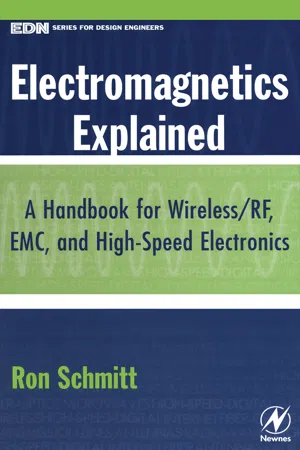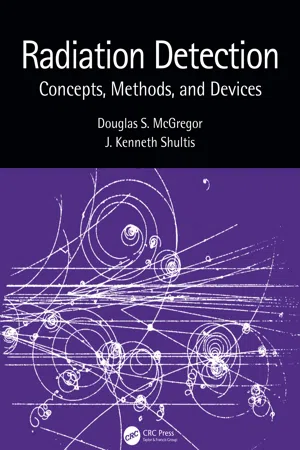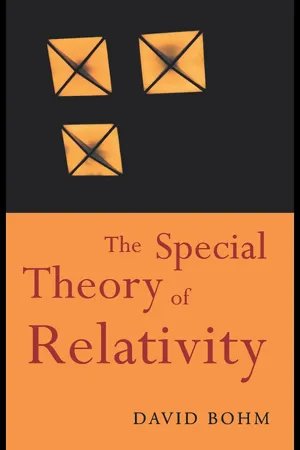Electric Charge Field and Potential
The electric charge field is a region around an electric charge where another charge experiences a force. The electric potential is the amount of work needed to move a unit positive charge from infinity to a point in the electric field. Both concepts are fundamental in understanding the behavior of electric charges and are crucial in the study of electromagnetism.
8 Key excerpts on "Electric Charge Field and Potential"
- eBook - ePub
Electrical Engineering
Fundamentals
- Viktor Hacker, Christof Sumereder(Authors)
- 2020(Publication Date)
- De Gruyter Oldenbourg(Publisher)
...4 The stationary electric field To separate charges energy is necessary; this energy is stored in the space between the separated charges. The resulting energy space is referred to as electric field. In this field, forces are exerted onto charge carriers. Electrically charged objects are surrounded by an electric field, which represents the state of a certain space (e.g. between electrically charged objects). Said state is characterised by the electric charges that are affected by a force as soon as they enter its space. The electric field strength E measures the force that affects a charged object in an electric field. The electric field strength at a certain point within the field is defined as the force exerted on a positive point unit charge Q + = 1 A s or C. The mechanical force F as well as the electric field strength E are vector quantities: E ⃗ = F ⃗ Q + E = V m Field types The pattern of the electric field lines strongly depends on the geometric arrangement of charges. Field lines always enter or exit the charge carrier vertically. Radial symmetric field Figure 4.1: Field line path of a charged sphere. Homogeneous field Figure 4.2: Field line path between two charged plates. Displacement work The force F depends on the field strength E and the quantity of electric charge Q. Energy level If a charge is moved using work against the field force, it subsequently has a higher energy level. Electric potential To obtain information on the possible (work) potential of an electric field, the potential must relate to the charge (potential per unit charge). The reference potential can be determined arbitrarily. Usually, the negative electrode is defined as zero potential. A surface with same electric potential at every point is called an equipotential surface. Voltage When energy is gained or lost, a charge is transferred from an electric potential 1 to another potential 2...
- eBook - ePub
Energy Medicine - E-Book
The Scientific Basis
- James L. Oschman(Author)
- 2015(Publication Date)
- Churchill Livingstone(Publisher)
...This electric field influences other electrically charged objects. There are two ways of describing the influences of fields and the ways they interact with each other. One perspective is that objects have properties that modify the space around them such that another object entering that space will have a force exerted upon it. A second perspective does not require the concept of force: Objects have properties that modify the space around them such that another object entering that space will experience a change in its motion. In the case of the electron, shown in Figure 2.2, the lines of force reveal the direction of motion a positive test charge would experience when brought into the space around the electron. Specifically, since opposite charges attract, the positive test charge will be drawn towards the center of charge of the electron. Figure 2.2 The electric field of a stationary electric charge. Note that the charge is imaged as a point in space. This is a simplification that has made it easier to calculate charge interactions. However, there are other valuable perspectives on the nature of the electric charge that will be discussed in this chapter. With regard to the image of the electron shown in Figure 2.2, recognize that the view of the electron as a point in space is but one of several models of the electron and other charged particles. What is an Electron? Much of the discussion that follows will concern the behaviour of electrons and other charged particles. We shall see that when a charge moves, magnetic fields are produced. And we will also see that the opposite is true: Magnetic fields alter the motions of nearby charges. These principles are profoundly important for energy medicine. Many of the techniques used in energy medicine look like New-Age hocus-pocus until they are viewed through the discerning eyes of the physicist and biophysicist...
- eBook - ePub
Electromagnetics Explained
A Handbook for Wireless/ RF, EMC, and High-Speed Electronics
- Ron Schmitt(Author)
- 2002(Publication Date)
- Newnes(Publisher)
...All movement is therefore relative. Figure 2.2 Two balls attached by a spring. The spring exerts an attractive force when the balls are pulled apart. VOLTAGE AND POTENTIAL ENERGY A quantity that goes hand in hand with the electric field is voltage. Voltage is also called potential, which is an accurate description since voltage quantifies potential energy. Voltage, like the electric field, is normalized per unit charge. Voltage = Potential energy of a unit charge In other words, multiplying voltage by charge gives the potential energy of that charge, just as multiplying the electric field by charge gives the force felt by the charge. Mathematically we represent this by Potential energy is always a relative term; therefore voltage is always relative. Gravity provides a great visual analogy for potential. Let’s define ground level as zero potential. A ball on the ground has zero potential, but a ball 6 feet in the air has a positive potential energy. If the ball were to be dropped from 6 feet, all of its potential energy will have been converted to kinetic energy (i.e., motion) just before it reaches the ground. Gravity provides a good analogy, but the electric field is more complicated because there are both positive and negative charges, whereas gravity has only positive mass. Furthermore, some particles and objects are electrically neutral, whereas all objects are affected by gravity. For instance, an unconnected wire is electrically neutral, therefore, it will not be subject to movement when placed in an electrical potential. (However, there are the secondary effects of electrostatic induction, which are described later in the chapter.) Consider another example, a vacuum tube diode, as shown in Figure 2.3. Two metals plates are placed in an evacuated glass tube, and a potential (10 V) is placed across them. The negative electrode is heated...
- eBook - ePub
Radiation Detection
Concepts, Methods, and Devices
- Douglas McGregor, J. Kenneth Shultis(Authors)
- 2020(Publication Date)
- CRC Press(Publisher)
...However, it is more common to use the general term potential, which is defined as the potential energy per unit charge, V = U Q ′ = 1 4 π ϵ o ∑ i = 1 n Q i r i, (8.16) and is expressed in units of volts (or joules per coulomb). Note that the potential is no longer dependent upon the “test” charge Q ′. 3 The force exerted upon Q ′ may also be expressed in terms of the electric field, produced by one or more point charges, in which F = Q ′ E. Substitution of q ′ E into Eq. (8.13) and division by Q ′ gives the potential difference between two points within the electric field. Hence, the potential difference between arbitrary locations a and b is V a b = Δ V = ∫ a b E ⋅ d l = ∫ a b E cos θ d l. (8.17) In summary, Eq. (8.17) is the voltage that an experimenter would measure between two points (a and b) within an electric field. The work done on a unit test charge moving from some point a to another point b in the electric field is Q ′ V ab. 8.3 Capacitance Consider the arrangement depicted in Fig. 8.6. Two conductive plates, separated by a distance d, have equal, but opposite, charges. An electric field is produced between the plates by the charges on the plates. The positively charged plate (or terminal) has a voltage V 1 and the negatively charged plate has a voltage V 2. The capacitance of the two plates is defined as the ratio of the charge magnitude on either plate to the magnitude of the potential difference between the plates, C = | Q Δ V |. (8.18) If Δ V is taken as the applied voltage V between the electrodes, then the above definition gives the important relation C V = Q (8.19) The SI unit for capacitance is the farad (one coulomb per volt)...
- eBook - ePub
- C R Robertson(Author)
- 2008(Publication Date)
- Routledge(Publisher)
...3.4. Fig. 3.4 Note that the electric field will exist in all of the space surrounding the two plates, but the uniform section exists only in the space between them. Some non-uniformity is shown by the curved lines at the edges (fringing effect). At this stage we are concerned only with the uniform field between the plates. If a positively charged particle was placed between the plates it would experience a force that would cause it to move from the positive to the negative plate. The value of force acting on the particle depends upon what is known as the electric field strength. 3.3 Electric Field Strength (E) This is defined as the force per unit charge exerted on a test charge placed inside the electric field. (An outdated name for this property is ‘electric force’). 3.4 Electric Flux (ψ) and Flux Density (D) In the SI system one ‘line’ of flux is assumed to radiate from the surface of a positive charge of one coulomb and terminate at the surface of a negative charge of one coulomb. Hence the electric flux has the same numerical value as the charge that produces it. Therefore the coulomb is used as the unit of electric flux. In addition, the Greek letter psi is usually replaced by the symbol for charge, namely Q. The electric flux density D is defined as the amount of flux per square metre of the electric field. This area is measured at right angles to the lines of force. This gives the following equation Worked Example 3.1 Q Two parallel plates of dimensions 30 mm by 20 mm are oppositely charged to a value of 50 mC. Calculate the density of the electric field existing between them. A Q = 50 × 10 −3 C; A = 30 × 20 × 10 −6 m 2 Worked Example 3.2 Q Two parallel metal plates, each having a csa of 400 mm 2, are charged from a constant current source of 50 μA for a time of 3 seconds...
- G. Jagadeeswar Reddy, T. Jayachandra Prasad(Authors)
- 2020(Publication Date)
- CRC Press(Publisher)
...Chapter 1 Static Electric Fields 1.1 Introduction Electrostatic in the sense static or rest or time in-varying electric fields. Electrostatic field can be obtained by the distribution of static charges. The two fundamental laws which describe electrostatic fields are Coulomb’s law and Gauss’s law: They are independent laws. i.e., one law does not depend on the other law. Coulomb’s law can be used to find electric field when the charge distribution is of any type, but it is easy to use Gauss’s law to find electric field when the charge distribution is symmetrical. 1.2 Coulomb’s Law This law is formulated in the year 1785 by Coulomb. It deals with the force a point charge exerts on another point charge; generally a charge can be expressed in terms of coulombs. 1 coulomb = 6 × 10 18 electrons 1 electron charge = − 1.6 × 10 − 19 Coulombs Coulomb’s law states that the force between two point charges Q 1 and Q 2 is along the line joining between them, directly proportional to the product of two point charges, and inversely proportional to the square of the distance between them ∴ F = K Q 1 Q 2 R 2 where K is proportional constant In SI, a unit for Q 1 and Q 2 is coulombs(C), for R meters(m) and for F. newtons(N). K = 1 4 π ∊ 0 where ∊ 0 = permittivity of free space (or) vacuum = 8.854 × 10 − 12 farads / meter = 10 − 9 36 π farads / m K = 36 π 4 π × 10 − 9 = 9 × 10 9 m / farads F = Q 1 Q 2 4 π ∊ 0 R 2 (1.2.1) Assume that the point charges Q 1 and Q 2 are located at (x 1, y 1,. z 1) and (x 2, y 2, z 2) with the position vectors r ¯ 1 and r ¯ 2 respectively. Let the force on Q 2 due to Q 1 be F ¯ 12 which can be written as F ¯ 12 = Q 1 Q 2 4 π ∊ 0 R 2 a ¯ R 12 (1.2.2) where a ¯ R 12 is unit vector along the vector R ¯ 12. Graphical representation of the vectors in rectangular coordinate system is shown in Fig.1.1 Fig...
- eBook - ePub
- Adrian Waygood(Author)
- 2018(Publication Date)
- Routledge(Publisher)
...Chapter 5 Potential and potential difference Objectives On completion of this chapter, you should be able to explain the need for external negative and positive potentials to cause current in a conductor. describe simple electric field patterns. explain the terms, potential and potential difference in terms of charge movement within electric fields. explain what is meant by ‘charge separation’. state the SI unit of measurement of potential difference. briefly explain the differences between each of the following terms: potential difference voltage electromotive force potential. Introduction In Chapter 3, we learnt that if we applied an external negative charge to one end of a metal conductor, and an external positive charge to the other end of that conductor, a drift of free electrons (an electric current) will take place through that conductor, as illustrated in Figure 5.1. Figure 5.1 We describe the external negative charge as having a negative ‘ potential ’, and the external positive charge as having a positive ‘ potential ’. The difference between these potentials, therefore, is called a ‘ potential difference ’, and it is this which provides the ‘driving force’ for a current. So, for charge carriers to flow between two points, we need a conducting path between those two points. there must be a potential difference between the two points. But what exactly do we mean by ‘ potential ’ and ‘ potential difference ’, and where do they come from? In order to understand these terms, we need a basic understanding of electric fields. Electric fields The area surrounding an electric charge, in which the effects of that charge may be observed, is termed an ‘ electric field ’. An electric field is graphically represented using lines of force, called ‘ electric flux ’...
- eBook - ePub
- David Bohm(Author)
- 2003(Publication Date)
- Routledge(Publisher)
...The forces between atoms, responsible for binding them into molecules, and ultimately into macroscopic solid objects were, on plausible grounds, surmised to originate in the attractive forces between electrons and the positively charged part of an atom, and the repulsive forces between electrons and electrons. Consider, for example, a crystal lattice. The places where such electrical forces come to a balance would then determine the distance D between successive atoms in the lattice, so that, in the last analysis, the size of such a crystal containing a specified number of atomic steps in any given direction is determined in this way. Lorentz assumed that the electrical forces were in essence states of stress and strain in the ether. From Maxwell’s equations (assumed to hold in the reference frame in which the ether was at rest) it was possible to calculate the electromagnetic field surrounding a charged particle. For a particle at rest in the ether, it followed that this field was derivable from a potential,, which was a spherically symmetric function of the distance R from the charge, i.e., (where q is the charge of the particle). When a similar calculation was done for a charge moving with a velocity v through the ether, it was found that the force field was no longer spherically symmetric. Rather its symmetry became that of an ellipse of revolution, having unchanged diameters in the directions perpendicular to the velocity, but shortened in the direction of motion in the ratio This shortening is evidently an effect of the movement of the electron through the ether. Because the electrical potential due to all the atoms of the crystal is just the sum of the potentials due to each particle out of which it is constituted, it follows that the whole pattern of equipotentials is contracted in the direction of motion and left unaltered in a perpendicular direction, in just the same way as happens with the field of a single electron...







